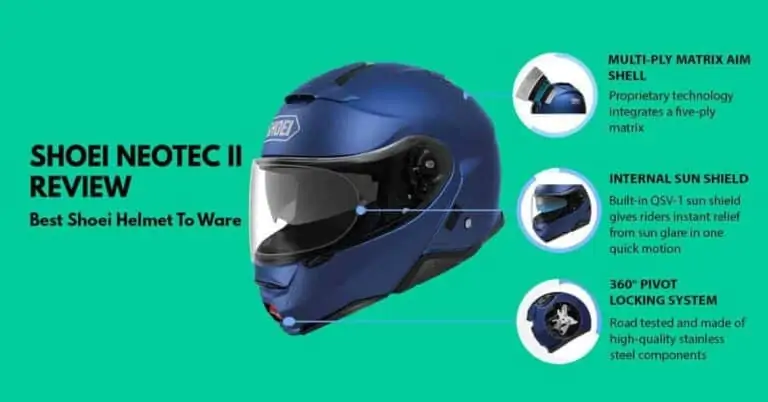Disclosure: As an Amazon Associate We earn from qualifying purchases.
Helmet is the most important safety gear to a motorcyclist. It provides protection to your head in case of road accidents. Statistics show that about 1,772 lives were saved due to wearing helmets in 2015. According to the experts, the number would have been a lot more if others had worn helmets.
The NHTSA claims that a helmet reduces head injuries significantly. Wearing a motorcycle helmet assures a 37% chance that a motorcyclist would be safe in a road accident as reported by them. Wearing a helmet is not mandatory to some places. Whether it’s enforced or not, if you are a concerned citizen then wear a helmet during motorcycle riding.
The National Highway Traffic Safety Administration (NHTSA) stated that about 5,286 died in America in 2016 where approximately 41% of them disregard the helmets.
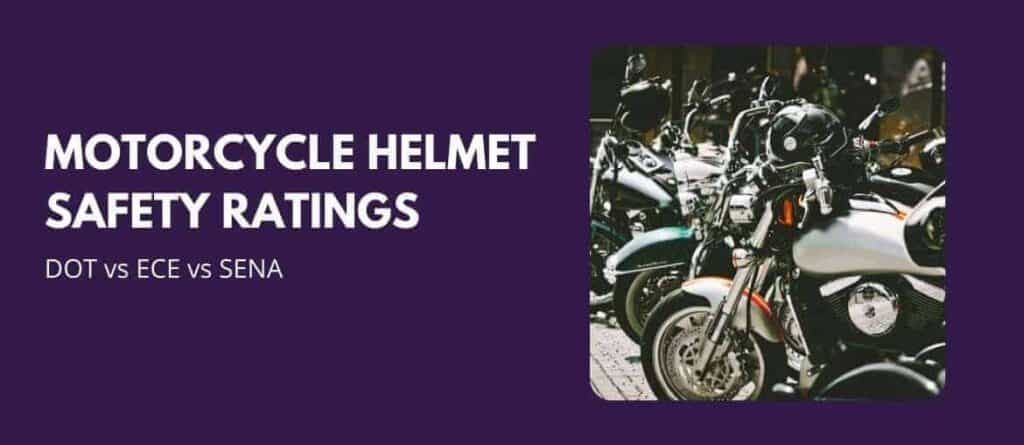
Unfortunately, not every helmet is created the same way and provides protection in the same manner. You might come up with the question of how to choose a safe helmet. This post is created to educate you so that you understand the safety standard of helmets.
Helmet Safety
You might have noticed that several helmets have different stickers on their back. These stickers actually represent different certifications. These certificates ensure that the manufacturer of the helmets follow their guidelines while producing. Some popular names are the Snell Foundation, DOT (Department of Transportation), the European Safety Standard 22/05, and the SHARP. They are responsible to ensure quality products in the market.
How Motorcycle Helmet Safety Ratings Works?
Every helmet goes through a bunch of tests before they are open for sale. Now we will talk about the helmet safety certifications and their testing systems. Keep that in mind that this post is the overview of the helmet safety standard and does not focus on the technical terms of the safety standard certification system.
DOT Helmet Standards
D.O.T. (Department of Transportation FMVSS218) helmet standard certification is a distinguished certification system in America for its rigorous testing. DOT checks random helmets and inspects the samples vigorously to find out the errors. They check whether the manufacturers ensure the standards to assure bikers’ safety in cases of accidents.
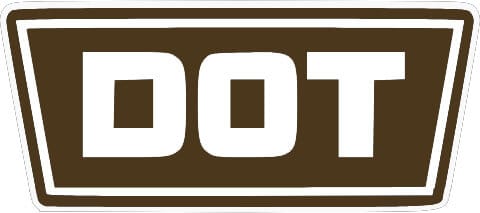
The DOT rating ensures that the helmets faced a series of drop tests and penetration tests and also inspects that if all the features of the helmets work properly or not. It focuses greatly on the retention system, penetration resistance, and to the field of vision. They use the hemispherical anvil and strike the helmet within the coverage area.
The DOT FMVSS 218 can also be conducted by a third-party agency, not in the lab of DOT. However, DOT lacks some important factors such as optics, friction resistance etc. Their random testing seems not up to the mark as some helmets with DOT stickers previously did not pass the standard tested by third parties. Still, DOT rating has been a famous testing system and recognized by the bikers community, especially in the USA.
ECE Helmet Standards
ECE is another motorcycle helmet testing system. Like DOT, ECE also tests the quality of helmets. Additionally, it also inspects other means of testing such as abrasion, retention, and durability. ECE tests the impact system by a single blow instead of the multiple blows. Probably, the reason is that the average crash speeds of motorcycles in Europe are lower.
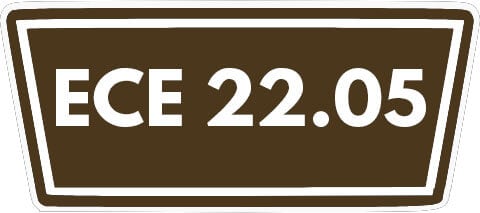
ECE is based on Europe and its standard is regulated by the Economic Commission for Europe. Though its not very popular in the USA, but it is approved by most of the countries in Europe. Unlike DOT, an ECE certification is given after the helmets are tested by different accredited third-parties. So, there’s no doubt regarding the quality of helmets that have the ECE stickers 22.05 and it is safe to use.
A helmet that has any of these stickers is safe to use. It is a helmet that can save you in fatal situations. Helmets can pass one, two, or even all three standards, so you may have a helmet that is just DOT, DOT and SNELL, or DOT and ECE approved.
Snell Helmet Standards
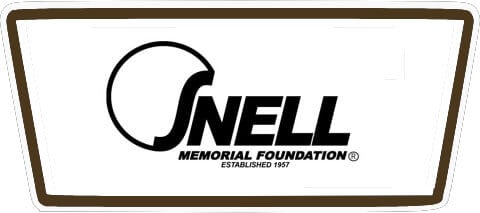
The Snell Foundation certification is arguably the most trusted and respected among the helmet industry. Besides testing the motorcycle helmets, their inspection includes bicycling, karting, motor race testing. They are considered to be the Gold standard for their thorough and aggressive testing system. The inspectors of Snell check the impact with multiple blows and also checks the positional stability, and dynamic retention, chin bar and penetration test. Their testing system is similar to an autopsy as the Snell technicians look closely to find whether there is any error in the helmet.
SHARP
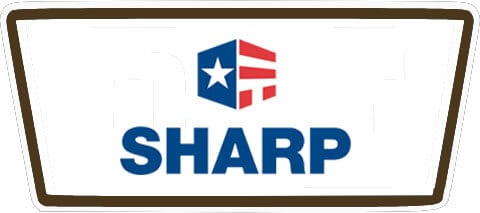
The SHARP Helmet Safety Scheme is comparatively the newbie in the helmet safety standard system. Unlike others, this organization provides a star rating instead declaring any pass or fail certification for motorcycle helmets. They are currently rating the helmets sold in the United Kingdom only. They measure the impact protection and only test helmets having the ECE certification. They rate 1 to 5 stars after testing a helmet. Its testing system is similar to the ECE and its designed specifically for the European consumers. So, If you are an American then you should keep in mind that the lid tested by SHARP may be different and you should probably go for a DOT certified helmet.
Why Shouldn’t You Buy Novelty Helmets?
The cost of these certified helmets are relatively high. This is the reason that many motorists consider buying these certified helmets as unnecessary. They are reluctant to purchase a quality helmet and often are reluctant to buy a helmet with the certified stickers and buy cheap helmets for riding. However, we should forget that money is not more important than safety.
A certified motorcycle helmet is not for fashion or for show off, rather it’s a very important piece of safety equipment. We have noticed that novelty helmets are being sold every day. A novelty helmet is a non-certified helmet and there is strong doubt that the manufacturer meets the adequate safety requirements.
The novelty helmets are made with cheap and bad materials. These helmets can barely give safety in a road crash. They can not withstand any impact as they lack the penetration requirements. Unfortunately, the number of sales of these helmets are very high. These helmets are sold by motor bikers who can not afford or are not interested in buying certified helmets and where law is enforced to wear helmets while riding. According to NHTSA (National Highway Transportation Safety Administration), they tested the novelty helmets in 2007.
The performance of these helmets are frustrating, and they could not comply with FMVSS No. 218. It is clear that the non-certified can not protect motorcycle riders’ heads during motorcycle crashes. If you ride wearing a non- certified novelty helmet then you are risking skull fracture and brain injury if any accident occurs which you obviously do not want.
But, if you are a fan of novelty helmet then we must suggest you to read the article about novelty vs dot helmets.
Wrap Up
A motorcycle rider should not take risks while riding and should carry all the safety gears. A motorcycle rider who wears a certified helmet is a lot safer during a motorcycle crash. Non- certified helmets give a false sense of security regarding the protection. So, when it comes to safety, do not compromise and take a helmet either DOT FMVSS 218, ECE 22.05 or SNELL M2015. They are guaranteed safe as they have passed numerous tests to ensure the safety of your head.
Among these, which one are you using? Does it fit right? Share your experience with us!



